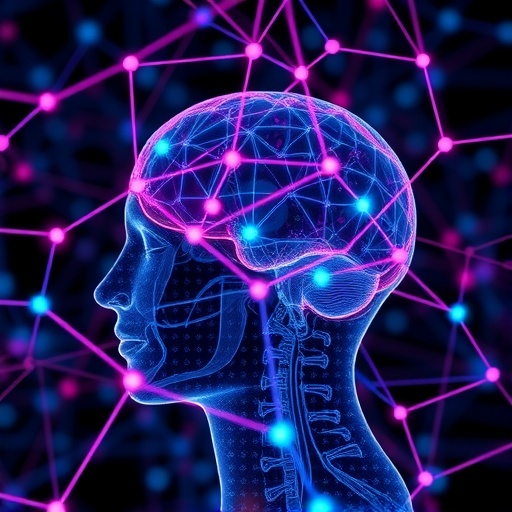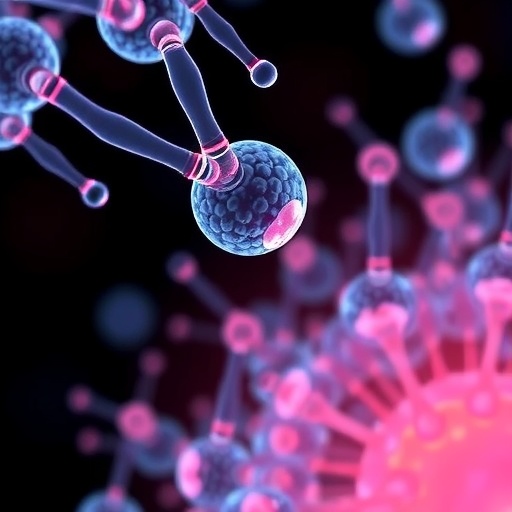Electroencephalography (EEG) has long served as a window into the intricate workings of the human brain, and as we celebrate its 100th anniversary, its potential continues to astound researchers in neuroscience. One of the most fascinating frontiers in this domain is the advent of EEG connectomes, which provide a framework for mapping and analyzing brain connectivity. These connectomes are revealing insights that could redefine our understanding of both healthy cognitive functions and various cerebral dysfunctions.
EEG connectomes graphically represent the electrical activities of neurons in distinct regions of the brain, illustrating the relationships between different brain areas over time. As neurons communicate, they generate oscillatory patterns, which are captured through EEG electrodes. This method allows scientists to visualize how these regions interact and influence one another, forming a dynamic network essential for cognitive processes. Importantly, recent advancements in machine learning are creating opportunities to maximize the utility of these complex datasets, enabling researchers to unravel the nuanced pathways through which various functions and disorders manifest.
The beauty of EEG lies not just in its ability to monitor changes in brain activities, but also in its temporal resolution—offering a real-time view of neural dynamics. Unlike other imaging modalities like fMRI, which primarily reflect metabolic activity, EEG preserves the timing of electrical signals. This aspect makes it particularly valuable in studying rapid cognitive processes and transitional brain states such as those experienced during learning, memory recall, or emotion regulation.
Recent studies have hinted at EEG connectomes’ transformative potential in translational neuroscience, especially in understanding brain disorders such as epilepsy, anxiety, and major depressive disorder. They allow for the identification of neurophysiological markers associated with specific conditions, paving the way for targeted interventions. By comparing the connectomic architecture of individuals with these disorders to healthy controls, researchers are beginning to build comprehensive profiles that enhance diagnosis and treatment strategies.
Additionally, there is considerable excitement surrounding the integration of neuromodulation techniques with EEG connectomes. This combination fosters a personalized and adaptive approach to treatment. Neuromodulation methods, including transcranial direct current stimulation (tDCS) and transcranial magnetic stimulation (TMS), can be paired with real-time EEG feedback to create a closed-loop system. Such systems allow clinicians to tailor interventions based on ongoing brain activity, promoting neuroplasticity and facilitating recovery strategies for dysfunctional brains.
While the promise of EEG connectomes is staggering, several hurdles still need to be addressed. One notable challenge lies in the inherent complexity of brain networks. As substantial inter-individual variability exists, generalizing findings across populations can be problematic. The development of standard protocols for EEG data acquisition and processing is critical for enabling large-scale studies and substantive insights. Such standardization would foster a shared understanding of EEG metrics across the neuroscience community.
Furthermore, the analytical techniques used to derive meaningful insights from EEG connectomes are still evolving. Machine learning and advanced statistical methods hold immense promise, yet require rigorous validation to avoid potential pitfalls such as overfitting or misinterpretation of results. The neuroscience community must tread cautiously while developing these frameworks to ensure their robustness and reliability.
There is also a pressing need for interdisciplinary collaboration among neuroscientists, engineers, and clinicians to bridge the gap between theoretical research and clinical application. Collaborative efforts will not only enhance the methodological rigor of EEG connectome studies but also inspire innovative ideas that can be tested in both laboratory and clinical settings. This teamwork can accelerate the pace at which findings are translated into viable therapeutic options, ultimately amplifying the benefits not only for research but also for patient care.
As this field continues to expand, educational programs must also evolve. Training future researchers in both EEG techniques and computational methodologies is crucial to cultivate a new generation of scientists who are adept in both understanding the biology of the brain and the sophisticated technological tools at their disposal. This holistic training will encourage the innovation necessary to push the boundaries of what is currently known about brain connectivity.
In the coming years, EEG connectomes are likely to become a cornerstone of cognitive and clinical neuroscience research. As researchers continue to unravel the complexities of brain networks, the potential applications of these tools will only grow. Future studies may lead to the development of diagnostic tools and treatment protocols that are finely tuned to the individual profiles revealed by EEG connectomes, thus enhancing the precision of neuroscience research.
The horizon is bright for EEG and its applications, with prospects not just confined to academic exploration but extending into practical healthcare solutions. As we continue to explore this rich avenue of research, we embark on a journey that could redefine the future of neurotherapeutics, brain health monitoring, and ultimately, our understanding of the human brain itself as both powerful and mutable.
The integration of machine learning stands to revolutionize our capacity to glean insights from the vast datasets created by EEG connectomes. The algorithms developed will facilitate dynamic modeling of brain functions, fostering a deeper understanding of how variations in connectivity correlate with cognitive capabilities. This burgeoning intersection of technology and neuroscience will be pivotal in enhancing the interpretability of EEG data.
Moreover, the influence of personalized treatment paradigms is another compelling avenue that warrants exploration. By leveraging EEG connectomes, clinicians could potentially track therapeutic effectiveness in real-time, adapting strategies as needed to optimize outcomes for their patients. Such modalities could shift the paradigm from a one-size-fits-all approach to a far more tailored, responsive methodology, maximizing the therapeutic impact.
As we reflect upon the last century of EEG advancements, we recognize this moment not just as a celebration, but as a launching point for the next wave of innovation and inquiry. The tools, ideas, and collaborative frameworks emerging today are not just shaping the present landscape of neuroscience—they are laying the groundwork for the future understanding of the brain and its vast capacities.
In conclusion, the exploration of EEG connectomes is set to offer unprecedented insights into brain connectivity, bridging the gap between cognitive function and clinical application. This evolving field promises to enhance our grasp of the brain’s complexities while simultaneously forging new paths in treatment methodologies for various neurological conditions. The synergy of advanced analytical techniques and innovative therapeutic strategies heralds a transformative era in neuroscience, primed for impactful discoveries and far-reaching implications.
Subject of Research: EEG connectomes in cognitive and clinical neuroscience
Article Title: Harnessing electroencephalography connectomes for cognitive and clinical neuroscience
Article References:
Zhang, Y., Chen, Z.S. Harnessing electroencephalography connectomes for cognitive and clinical neuroscience. Nat. Biomed. Eng 9, 1186–1201 (2025). https://doi.org/10.1038/s41551-025-01442-4
Image Credits: AI Generated
DOI: https://doi.org/10.1038/s41551-025-01442-4
Keywords: EEG, brain connectivity, EEG connectomes, neuroscience, machine learning, neuromodulation, neuroplasticity, clinical applications.
Tags: advancements in EEG technologybrain connectivity mappingcerebral dysfunctions and EEGEEG connectomes in neuroscienceEEG electrode technologyEEG vs fMRI comparisonmachine learning in EEG analysisneural dynamics visualizationneuroscience breakthroughs with EEGoscillatory patterns in EEG datareal-time brain activity monitoringunderstanding cognitive functions through EEG





